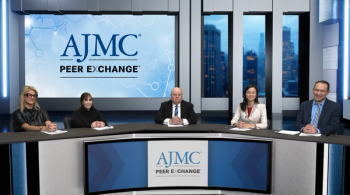
PapSCAR Prevalence May Predict Cardiac Death in Patients With Dilated Cardiomyopathy
Key Takeaways
- Papillary muscle scarring in DCM patients is associated with higher risks of cardiac death, heart failure, and arrhythmia events.
- Microvascular dysfunction is a strong predictor of poor prognosis, independent of LVEF and NYHA class.
Papillary muscle scarring (papSCAR) was found to be associated with increased risk of cardiac death in patients with dilated cardiomyopathy
Patients with dilated cardiomyopathy have an increased risk of papillary muscle scarring (papSCAR), which was found to be independently associated with cardiac death,
“In patients with DCM, microvascular dysfunction appears to be a strong predictor of poor prognosis independent of left ventricle (LV) ejection fraction (LVEF) and New York Heart Association (NYHA) functional class,” the study authors wrote. “The presence of papSCAR may influence prognosis since it may be a marker of microvascular dysfunction.”1
Patients included in the study were assessed for DCM and referred for cardiovascular magnetic resonance (CMR) imaging. Patients with known or suspected DCM were enrolled at an academic hospital in North Carolina from January 2011 to December 2020. However, patients with obstructive CAD, severe primary valvular disease, and a diagnosis of other nonischemic disorders were excluded.
The final study cohort consisted of 470 patients with a mean age of 55.3 years; 205 patients were female. There were a total of 115 patients diagnosed with NYHA class 3 or 4. The mean LVEF was 31.2%, and the midwall scarring was present in 109 patients, with a median extent of 2.7% of LV mass.
PapSCAR's Association With Cardiovascular Events
CMR imaging detected papSCAR in 137 patients, 107 of whom had anterior papSCAR, 11 with posterior papSCAR, and 81 with both anterior and posterior papSCAR. Patients with papSCAR were older and more likely to have diabetes and a midwall scar.
In the 8-year follow-up, there were 75 observed deaths, 53 of which were cardiac. Out of 137 patients with papSCAR, 26 (19.0%) succumbed to the primary endpoint, cardiac death. Comparatively, there were 27 (8.1%) of the remaining 333 patients without papSCAR that also met the primary endpoint. However, despite a similar number of patients who met the primary endpoint, those with a papSCAR were observed to have a significantly high rate of cardiac death when compared to those without (HR, 2.30; 95% CI, 1.34-3.95; P = .002).
The 5-year rate of cardiac death was also significantly higher for those with papSCAR (20.5%) when compared to those without (9.0%).
Regarding secondary endpoints, heart failure and arrhythmia events, 49 patients experienced heart failure events, of which 35 had heart failure deaths. Of the remaining patients, 15 had a cardiac transplant, after which one patient died of heart failure.
On the arrhythmia end, 24 patients experienced related events, of whom 18 had sudden cardiac death (SCD) and 11 had aborted SCD. Five of the 11 who had aborted SCD succumbed to SCD afterwards.
Patients with papSCAR had high rates of both heart failure (HR, 2.29; 95% CI, 1.31-4.02; P = .004) and arrhythmia events (HR, 2.48; 95% CI, 1.12-5.52; P = .03) when compared to those without. The cumulative 5-year rates of heart failure events and arrhythmia events were 19.4% and 9.8% in patients with papSCAR and 8.5% and 4.0%, respectively, in patients without papSCAR.
“Regarding heart failure, it is notable that the papillary muscles can strongly impact ventricular geometry and function. The working papillary muscles play an integral role in cardiac mechanics—in diastole by limiting left ventricle distension, and in systole by increasing longitudinal shortening,” the study authors wrote. “Which in turn increases left ventricle wall stretch and generates greater tension and stroke volume.”
The study was limited by its single-center design, which may introduce enrollment bias and limit generalizability. Genetic factors and mechanisms of microvascular dysfunction were not assessed, leaving gaps in understanding the pathways underlying papillary muscle scarring. Future multicenter studies with genetic and perfusion data are needed to validate and expand these findings across broader populations.
"Overall, these findings show that papSCAR provides prognostic value across the spectrum of patients with DCM and suggest that papSCAR may be an early marker of risk,” the study authors concluded.
References
1. Kaolawanich Y, Wendell DC, Kim HW, et al. Prognostic value of papillary muscle scarring in patients with dilated cardiomyopathy. JAMA Cardiol. Published online October 15, 2025. doi:10.1001/jamacardio.2025.3822
2. Dilated cardiomyopathy (DCM). American Heart Association. Last Reviewed May 28, 2024. Accessed October 16, 2025.
Newsletter
Stay ahead of policy, cost, and value—subscribe to AJMC for expert insights at the intersection of clinical care and health economics.






































